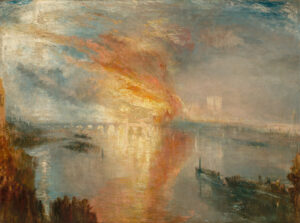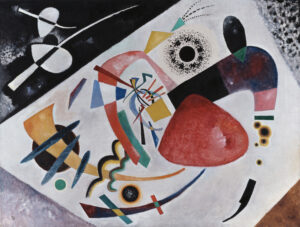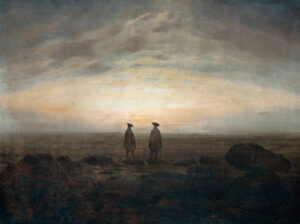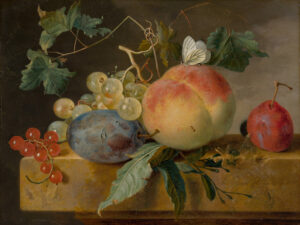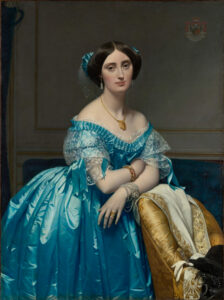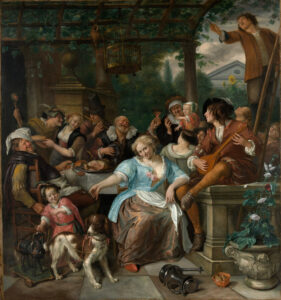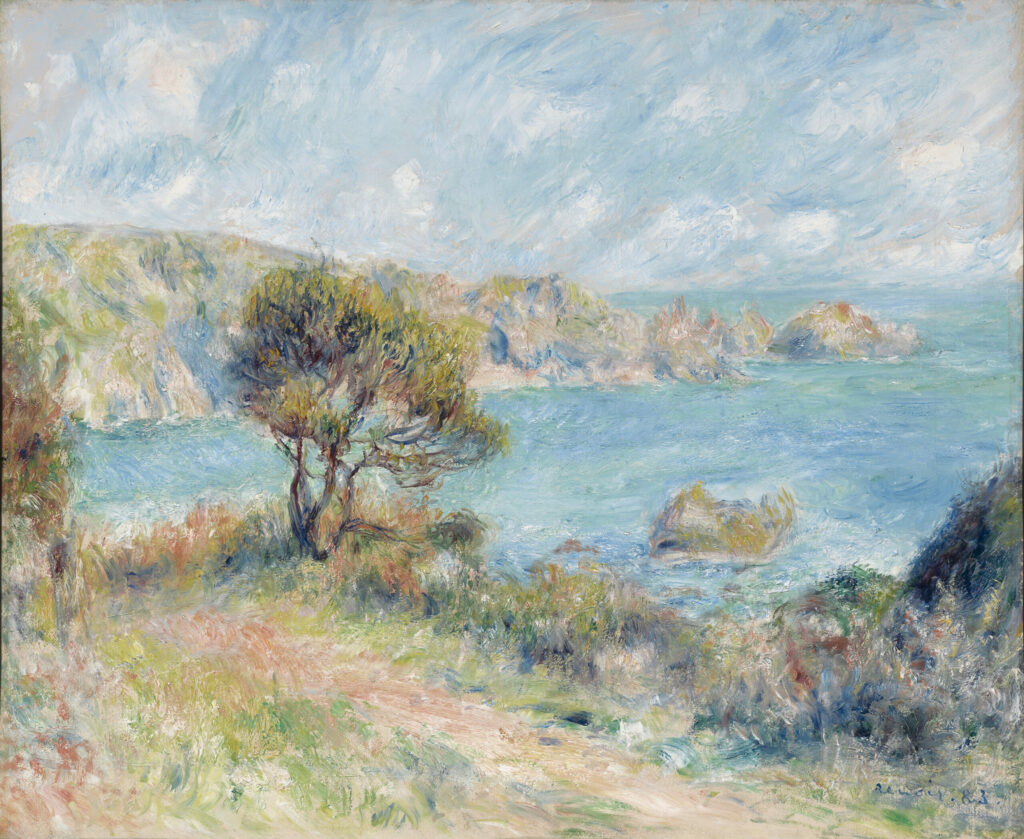
View of Guernsey (1883) testifies to Renoir’s fascination with maritime landscapes during his stay in the Anglo-Norman archipelago.
This canvas reveals the stylistic evolution of the Impressionist master toward a freer and more spontaneous approach to natural motifs. The composition is structured around a luxuriant vegetal foreground, dominated by olive greens and ochres, contrasting with the azure blues of the sea. The tree, placed slightly off-center, guides the eye toward the horizon line punctuated by rocky islets. The impasto vibrates under the light, conveying the atmospheric instantaneity dear to the Impressionists. The pearlescent reflections on the water and the mobility of the clouds create a sensation of movement, characteristic of Renoir’s seascapes. This work perfectly illustrates the painter’s ability to capture the essence of a landscape while preserving his chromatic sensibility.
Further information
- Pierre-Auguste Renoir, View at Guernsey, 1883, oil on canvas. Clark Art Institute, 1955.601
- 46 x 55.7 cm (18 1/8 x 21 15/16 in.)
- https://www.clarkart.edu/ArtPiece/Detail/View-at-Guernsey
Pierre-Auguste Renoir (1841-1919) remains one of the most emblematic and popular figures of French Impressionism. Born in Limoges into a family of artisans, he began as a porcelain painter in a Parisian workshop before entering the École des Beaux-Arts and Charles Gleyre’s studio, where he forged decisive friendships with Monet, Bazille, and Sisley. Co-founder of the Impressionist movement in 1874, Renoir progressively developed a personal style imbued with hedonism and sensuality, favoring the representation of bourgeois joie de vivre and feminine beauty. His shimmering palette and virtuosic technique made him the champion of golden light and pearlescent flesh tones. Although less prolific in the landscape genre than his contemporaries Monet or Pissarro, his seascapes and pastoral scenes reveal a consummate mastery of pure color and natural light effects.

